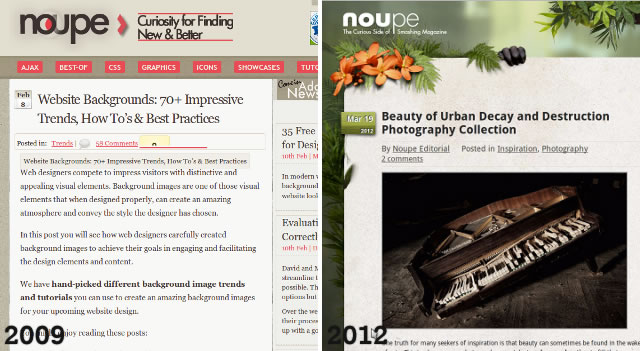I guess everybody can think of site revamps that went terribly wrong and of revamps that really improved a site. However, when you discuss somebody else’s site it is much easier than when you need to decide if your own site needs a revamp.
There are times when you need to revamp your site and times when it is best not to touch a thing. While there is no universal prescription when a site revamp is a good idea and when not, there are some factors to keep in mind when wondering what to do. Here are some ideas.
What Do You Plan to Revamp?
One of the questions you need to answer before you start with the revamp itself is what your revamp plans are. For instance, you need to think about these:
Will you be doing minor cosmetic changes only (which is not much of a revamp) or more in-depth ones?
Will you need to revamp only the design, or are modifications to the logic behind it (i.e. the database and the programming) required?
What will you keep from the present design/functionality?
These all questions need to find answers and very often when you start pondering, you will discover that actually a revamp is not only unnecessary but it could do more damage than good. Also, even if your revamp makes sense and is a good one, be prepared to hear negative feedback from your users about the redesign – people are just used to what it was and aren’t always easy to accept changes even when they are better.
Some Good Reasons to Revamp Your Site

Generally speaking, if any of the following are true, then your site does need a revamp:
1. A change in business. A site is the face of a business, so if your business has changed, this might imply site modifications are mandatory. In some cases even change in ownership might require a new design in order to make the site consistent with the rules of the new owner.
2. You need new functionality that can’t be accommodated with the present design. Even if your business hasn’t changed and the owner stays the same, it is very probable you need new functionality. For instance, if you decide to add a shopping cart to your site, you might be able to do it without much hassle but very often you will need to modify the existing design a lot in order to accommodate the new functionality.
3. A major shift in online trends. Good Web sites are designed in a way that makes them good for years but when online trends shift majorly, even the best site looks outdated. For instance, when Web 2.0 became popular, Web 1.0 sites became so old. Of course, such drastic changes in technology happen once or twice in a decade but you need to think about them.
A more common reason to revamp a site is the advent of new technology. For instance, many sites were revamped to take advantage of CSS3 when it became popular and supported by more browsers because CSS3 can do many things CSS2 wasn’t safe to use for.
4. The frequent minor changes have made your site a mess and it is best to start from scratch. In the Things I Hate About My Clients article I gave the example of a client whose site has become an incredible mess due to lame updates but I guess this isn’t the worst to see in this department. When many small changes have been made over the years, then it might be easier to revamp your site completely than to continue maintaining the spaghetti code. Still, don’t take this as a firm recommendation but think with your head – you might have to clean the code only, not perform a major revamp (though the time this will take might be more than the time needed for a revamp).
Times When You Shouldn’t Even Think of Revamp
In addition to the reasons that give you food for thought if a revamp is necessary, there are also reasons that in fact are not reasons for a revamp. Here are some of them:
1. My designer left me or I fired him/her. It is true that a site is best maintained by its author but the departure of your designer is definitely not a reason to revamp your site. You can find somebody to revamp it for sure but if they leave again, do you think you can revamp your site with every change of your designer? Rather, find somebody to maintain the present version and this solves your problem.
2. My competitors are revamping their sites. The “me too” approach is never good. Your competitors might have sound reasons to revamp their sites but this doesn’t mean it’s the same for you. Besides, who says their revamp will be successful?
3. It has been N years since the last revamp. The mere fact that you haven’t revamped your site in N years isn’t a reason to do it now. Of course, if it has been 3, 5, or more years since the last revamp, it is more likely that your site needs new functionality or that it will benefit from the use of new technologies but the number of years in itself isn’t a reason to revamp. There are many successful sites that have kept their designs for years and many unsuccessful sites that are constantly changing their designs, so it is obvious which group you’d like to belong to.
If I Could Turn Back Time
If you want to get more ideas about how others have revamped their sites, you might want to have a look at the Before and After Redesigns of Popular Design Blogs article. The sites there are design blogs only but still it gives an idea of what kinds of revamps are popular. Unfortunately, not all redesigns are successful and I do agree with the comments under the article that many sites look like templates from 5 years ago after the redesign but still even negative examples are a good learning experience.
If you are interested in old versions of popular sites, one really useful tool is the Wayback machine. It is a free service that allows to browse through the snapshots of popular sites from years ago. For instance, here are some snapshots of how SpeckyBoy looked throughout the years:
Related Topics
Top
